Review of Ghost in the Shell: Stand Alone Complex 2nd Gig Vol. 4
Introduction
Cliffhangers on DVDs should be considered a form of torture when it comes to human rights acts. Showing us a moment of positively cosmic significance, then leaving us hanging for two months is almost obscene. Then there is the fact that the greater the anticipation, the more chance of being let down by the resolution, no matter how brilliant it is. The gap between volumes three and four of Ghost In The Shell: Stand Alone Complex 2nd Gig has had me inflicting serious damage to my fingernails. But the wait is over, and I now get to see what happens next.
Ghost In The Shell inhabits one of those strange new worlds we often hear tell of. Set in the not too distant future, the divisions between man and machine are blurring. AI is a reality, and life like androids do the menial jobs that humans used to. It isn`t unusual for the average citizen to be enhanced in some way with implants or prosthetics. For some the enhancements are to such a degree that little of the original human remains. Major Motoko Kusanagi of Section 9 is one such person, who since the age of 6 has been equipped with a totally cybernetic body. The only biological component left is her brain. The differences between man and machine becomes ever more meaningless when machines can develop personality. It also opens up a whole new area of criminal activity, when cybernetically enhanced senses can be fooled by an enterprising hacker, or worse their brains themselves can be hacked into, subverting the innocent by reprogramming their `ghosts`. In the light of such terrifying possibilities, a special unit is created to head off the threat of such cyber-crime. Section 9 led by Aramaki is at the forefront of combating the new cyber criminals.
Volume 3 culminated with a shocking rooftop protest by the Individual Eleven, among them the familiar face of Hideo Kuze, would be Prime Ministerial assassin. The televised protest threatens to further destabilise the nation, as the refugee crisis threatens to spiral out of control. And behind the scenes is the enigmatic Gohda pulling the strings. Section 9 has to work harder than before just to keep up. Just as before, Manga Entertainment releases Ghost In The Shell on 2 discs. Disc 1 contains four episodes and the bulk of the extras, as well as DD 2.0 and DD 5.1 soundtracks. Disc 2 contains the same episodes, but with DTS soundtracks.
13. Make Up
After Kuze escapes from the rooftop following the Individual Eleven`s `statement`, Section 9 has to track him down. The only clue is that his face is unique, especially designed for him, and finding the exclusive designer will no doubt lead to Kuze. But Batou and Togusa are too late. When they get to his house they find a murder scene. It`s about to descend into a p***ing match over jurisdiction with the local police, when back up Paz and Saito turn up. The police are shocked. The surveillance tape reveals that it was Paz who murdered the designer!
14. Poker Face
Japan and the US are in the middle of critical treaty negotiations. At the same time, Saito engages some of the new recruits for a critical poker game. Saito relates the story of how he first met the Major back in 2020 during a Mexican border war. But for their first meeting, they were on opposite sides of the conflict, staring at each other down sniper scopes.
15. Pat
The Tachikomas decide to do a little investigating of their own into the Individual Eleven, but considering the concepts of individuality and free will invariably leads them to question their own natures. Then Section 9 gets involved in an investigation into an explosion that takes place at the AI lab, implicating researcher Professor Atsuda. This triggers odd memories in the Tachikomas, memories of a man they have never met.
16. Another Chance
Ishikawa returns from the peninsula after investigating Kuze`s past. But his information is of secondary importance, as the refugee crisis deepens, and government departments insist on passing the buck. Section 9 learns that the refugee activists are co-ordinating using `cyberbrain hubs`, and the Prime Minister wishes to use Section 9 to further her own agenda. When the members of Section 9 do get a chance to meet, Ishikawa shares the unsettling history of Hideo Kuze.
Every episode is followed by a short Tachikomatic Days animation.
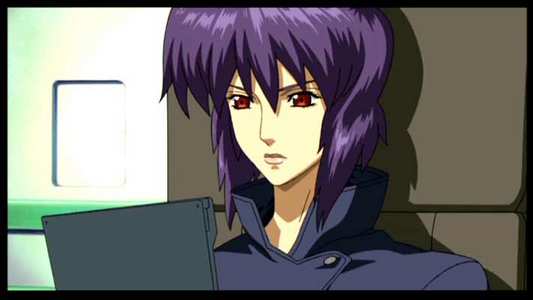
Video
Ghost In The Shell Stand Alone Complex gets an anamorphic 1.85:1 transfer that is sharp, clear and vivid. The image quality is of greater clarity than the best of Season 1 if anything, with even the colour banding usually associated with animation reduced to a minor degree here. Digital artefacts were absent, and if there was any grain, it seemed more of an artistic decision. Ghost In The Shell is a dynamic and brilliantly animated show. The character design remains of high quality, again improving on Season 1, and the action is striking and dynamic, with both the 2D and 3D imagery used effectively to tell the stories.
The world of Ghost In The Shell grows as well in the second series. Season 1 was about the technology; it was all about the machines, and the new world. Everything was bright and shiny and wondrous. 2nd Gig goes about painting the background to this world, and introduces a much more tangible sense of age, of grime and of decrepitude. It also feels much larger in scope. We are taken into the darker niches of society, and the colour palette consequently becomes grimmer and more subdued. This series makes much greater use of light and shade in comparison to the first outing. It also still marries 2D animation to 3D CGI in a way that works brilliantly. In almost every way, the new series is step up from the first.
Once again, the only issue that I had with the authoring was the layer change in the middle of episode 3, discreet though it was. I don`t understand why the show isn`t presented two episodes to a layer.
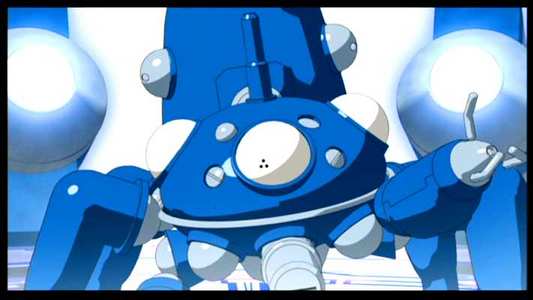
Audio
This release comes with a full selection of soundtracks, as per usual for a Manga Entertainment release. Disc 1 has soundtracks in DD 2.0 English and Japanese Stereo, as well as DD 5.1 English and Japanese, whereas Disc 2 allows you to watch the show with DTS 5.1 English and Japanese (encoded at 754kbps), as well as a repeat of the DD 2.0 English Stereo track.
The surround is excellent and there is ample action that makes full use of the soundstage, with plenty of futuristic machinery and vehicles. 2nd Gig also provides some all new Yoko Kanno tunes, including the theme tunes. The music of Ghost In The Shell has always been an exemplary accompaniment to the show, and these all-new tunes are just as immersing. My preference will probably always be for the original language, but the English dub is better than most. That`s high praise when you consider that most recent anime dubs have been of good quality. Here the character voices are perfectly suited, and the actor performances capture the emotion of the scenes well. The translated English subtitles are legible throughout.
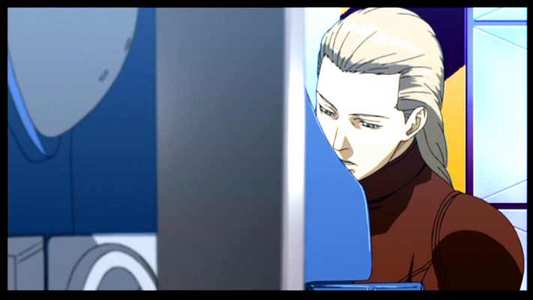
Features
Once again the menus follow a simple holographic theme, but this time they are green and showcase clips from the episodes. It`s pretty nifty to look at, user-friendly and lacks the occasional colour-clash of season 1.
On Disc 1 you get episode synopses. There are also two interviews. The first is a conversation with Director Kenji Kamiyama, Tohru Ohkawa (Saito) and Takashi Onozuka (Paz). The second interview features Kenji Kamiyama again, and this time Sakiko Tamagawa and Yutaka Nakano, the voices of the Tachikomas and Ishikawa, join him. Both last for twelve minutes in which the director and voice actors discuss the characters and their respective stories, showcased on this disc.
The trailers get shunted to Disc 2.
Just as before, there is no Play All option, but this time each episode is preceded by an IDT Entertainment logo, which adds 10 seconds of inescapable CGI before we get to the good stuff. At the end of the final episode on the disc, you can see the English dub cast in an extra credit sequence.

Conclusion
Here we go again, another volume of Ghost In The Shell: Stand Alone Complex for me to rave about. This is an anime series that is a cut above any other, amazing animation coupled with outstanding storytelling. I doubt I`ll ever tire of watching it, but surprisingly I`m not even tired of singing its praises eleven volumes down the line. The 2nd series has more of an integrated storyline than before. These aren`t episodes strictly divided into stand-alone stories, or episodes that advance the ongoing storyline, but rather a blending of both. That said, this volume sees episodes that focus on individual stories, leaving the refugee crisis and Individual Eleven storyline to simmer away in the background. It`s something of a release of pressure following the climax of volume three, but rather than feel let down at the lack of further development in that direction, I found the change in focus quite refreshing.
The four episodes on this disc tell four quite different stories, yet all are of consistently good quality. However, there is a degree of familiarity about the final two episodes. The disc starts very strongly, with a couple of episodes that explore and develop two of the `minor` members of Section 9. It`s been a while coming, but we learn that there is more to Paz than just looking moody and smoking in Make Up. The investigation into Kuze and the Individual Eleven leads to a cybernetic face designer, and through one of those coincidences that only occur in TV or movies, Paz winds up implicated in his murder. Paz turns out to be a love `em and leave `em kind of guy, and behind all this lies a woman scorned. Her vengeance turns out to be unique, and the sort of idea that only Ghost In The Shell could come up with. With Poker Face, we get to see more of the taciturn Saito, who has more to say around the poker table than he has said in the prior episodes combined. It`s a flashback episode that relates his first encounter with the Major in a war torn Mexico. He`s there as a mercenary, disillusioned with his own nation, while the Major is there as part of the UN peacekeeping forces. This episode is also fascinating visually, showing a period between now and the future world of Ghost In The Shell, and the machinery and technology is a hybrid of the two designs. The tanks are recognisably similar to the tanks we have today, but can walk to a degree like the spider tanks like the Tachikomas.
Pat and Another Chance will be quite familiar if you saw the first series. Pat is reminiscent of Machines Desirantes in that it is centred on the Tachikomas as they once again spend twenty minutes on self-analysis. It`s fascinating to see how the cute little tanks have evolved since the last season, and they are quite different in that there has been a deliberate attempt to retard their headlong rush to individuality. It isn`t all that successful though. But before the psychology can overwhelm, external events awaken hidden memories, leading to a family reunion of sorts. Another Chance takes its cue from last season`s Chat! Chat! Chat! It`s an exposition episode where Ishikawa fills in Kuze`s background. Section 9 gathers in a virtual briefing room in a similar vein to the Chat! Chat! Chat! where we learn about the mysterious nemesis. Neither of these episodes quite lives up to their predecessors. The threat of disassembly no longer hangs over the Tachikomas, and their superiors don`t consider their curious nature and childlike personalities a threat, so the dramatic undercurrent is quite reduced. Similarly, Another Chance is straight exposition, the Major isn`t there in disguise, the Laughing Man isn`t lurking in the shadows, there aren`t multiple points of view of events, and it`s just a straightforward briefing. Still, Pat is a sweet little story that is enjoyable on its own level, while the briefing in Another Chance is essential back story that develops Kuze`s character and lays the foundation for future developments. There is also an air of serendipity about it, as it posits a future conflict in Korea, where the US and its allies take action because the North is busy enriching uranium. Also in these episodes, the main story is always playing in the background, a second layer to keep an eye on. For short twenty-five minute episodes, there is a wealth of plot packed in them.
There is an air of inevitability about how I`m going to conclude this review, with another stellar volume of Ghost In The Shell: Stand Alone Complex. Two brilliant character episodes that have been a long time coming are joined by two episodes that are a little more familiar. But even when Ghost In The Shell recycles ideas, it adds enough to make the stories original and just as gripping. With the show widening in scope, and Section 9 having to face the bigger picture, these episodes are more thoughtful and multi-layered than before. Awesome stuff!
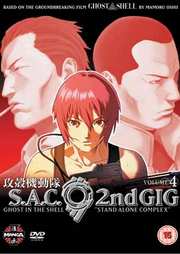



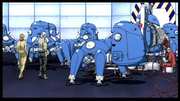
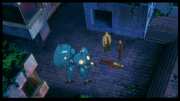

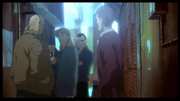
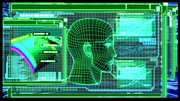
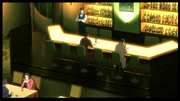
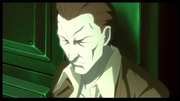
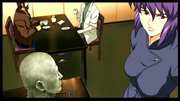

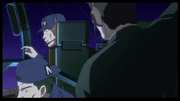
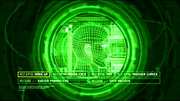
































Your Opinions and Comments
Be the first to post a comment!